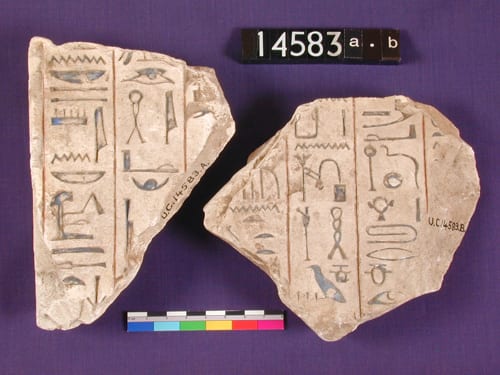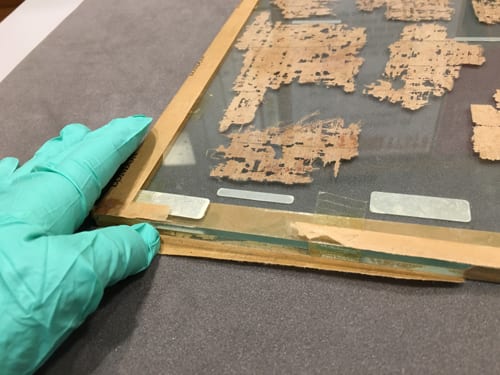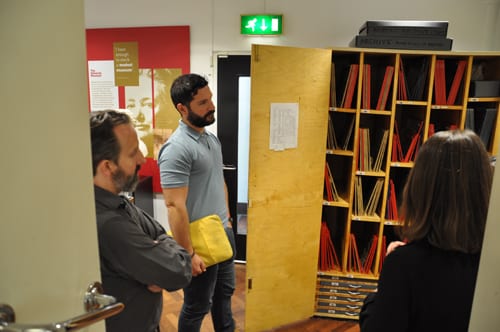A new look for Papyrus and Shabtis at the Petrie Museum
By Anna E Garnett, on 23 May 2018
If you come down to the Petrie Museum, you will see some new changes in the exhibition space. In April 2018, we formally opened three new display cases in the Pottery Gallery as part of our successful Arts Council England-funded Papyrus for the People project, which has recently ended. These modern cases look somewhat different to the antique wooden cases which you are used to seeing at the Petrie Museum, but importantly they are conservation-grade and offer the opportunity to safely display a range of objects including examples from our world-class papyrus collection.
Of the three new showcases, two are to display different themes which have emerged from new translations of our written material by language specialists during the Papyrus Project. These displays will rotate every 6-8 months, partly so that we are able to offer fresh interpretations of the texts on a more regular basis, but also to preserve the fragile papyrus fragments from being exposed to too much light, as this can be damaging to the papyrus and the inscriptions.
 Close
Close







